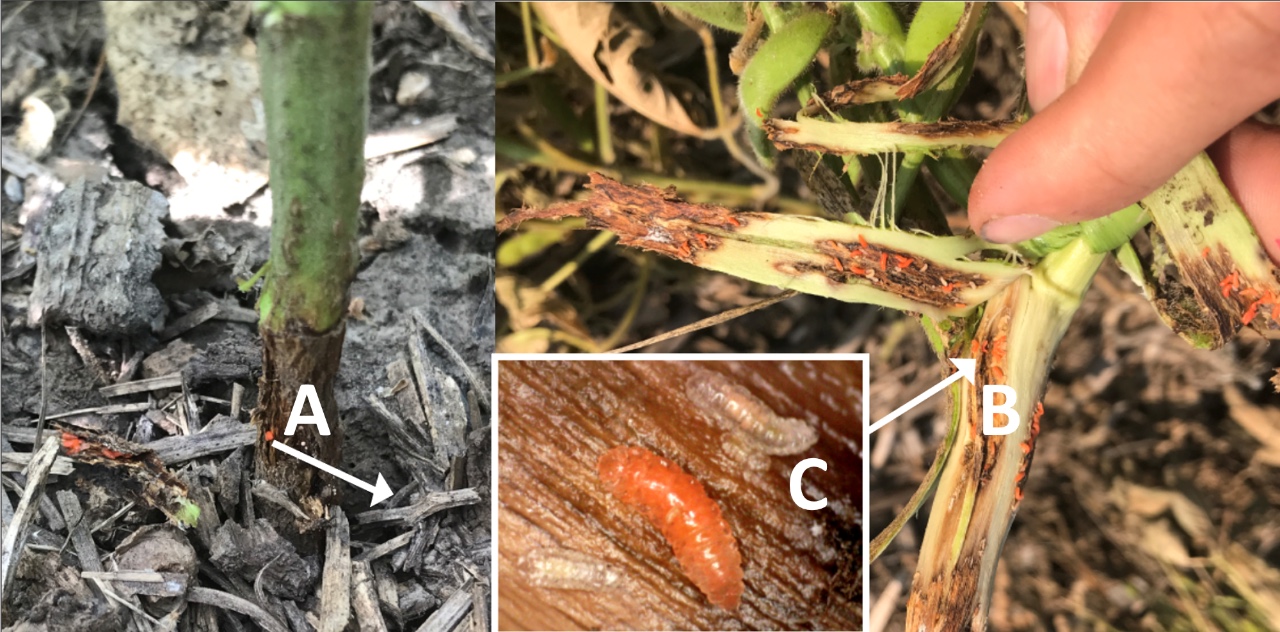Bryan Jensen, UW Dept. of Entomology, Division of Extension
It took a call and a sample to remind me that I should get out a quick reminder out for people to be looking for signs and symptoms of soybean gall midge (SGM). To date, soybean gall midge has not been found in Wisconsin. Now, and through the rest of the growing season, is a good time to be looking for its signs and symptoms. It will be very important to confirm the presence of SGM in the state.
Soybean gall midge damage is more prominent at the field edge. Adults lay eggs at the base of the soybean plant and several larvae can be found at a single feeding site. Larvae are translucent at first but turn orange when mature. Swollen stems (galls) and darkened feeding sites are often the first symptoms of injury. After prolong feeding, larvae can girdle the plant. As feeding progresses the entire plant can be killed. Late July and August are a great time to pick up on plant death, however, healthy plants may also hide dead plants. SGM are certainly not the only pest to cause plant death at this time of year. Other diseases may cause similar symptoms. To help confirm SGM injured plants, look for the larvae and the location of the feeding site should be just above ground level.
The white mold gall midge is a different species and has been found in Wisconsin. They are very similar in appearance to SGM but are not considered an economic pest. White mold gall midge prefers areas of the soybean plant which are compromised by diseases or other injury in which to feed. These sites are usually found in the upper portion of the plant. Always error on the side of caution.
If you have a concern regarding ID, please send samples to PJ Liesch, Insect Diagnostician, UW Department of Entomology, 1630 Linden Drive, Madison, WI 53706. Help us to confirm the presence of SGM.
For more information on SGM please visit Justin McMechan, Univ. of Nebraska, SGM website at https://soybeangallmidge.org/
Note darkened feeding area at the base of the soybean plant on the left. Plant on right indicates several feeding larvae. Inset is a close up of larvae. Photos courtesy of Dr. Justin McMechan, University of Nebraska.
